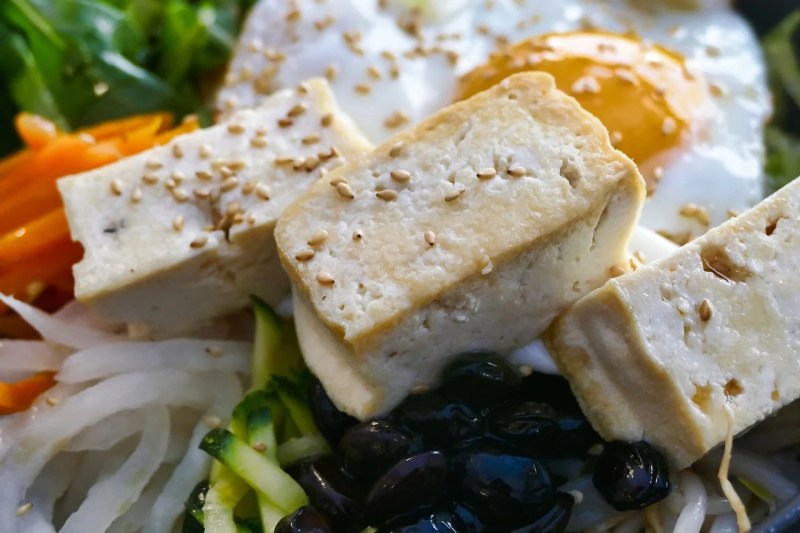We’ve all heard that our morning can be a great indication of how the rest of the day will turn out. Taking it a step further, we acknowledge that what we eat for breakfast can determine our morning and influence the rest of the day. To make the most of it, be sure to include a vital component in your breakfast: protein.
Aim for a high-protein meal in the morning to achieve health goals like weight loss or improving muscle mass. The perfect meal is a 30 grams of protein breakfast to start your morning with energy and wellness. Protein has excellent effects on weight and overall health, so what better way to start the most important meal of the day than with protein?
How does protein in the morning benefit the body?

Eating protein in the morning does wonders for the body. This macronutrient supports energy balance and satiety. Your metabolism will be boosted, and you will burn more calories for protein digestion. Additionally, protein allows you to feel full for an extended period, preventing cravings and overeating. A bonus benefit is the positive effect this has on concentration, energy, and focus, as demonstrated in adolescents in school, among other populations.
Research has shown that adults who eat a protein-rich breakfast in the morning experience improvements in glycemic control. Stable blood sugar levels will keep you from suffering energy crashes. As a result, this will help keep your weight under control, especially in the presence of type 2 diabetes.
Protein is essential when it comes to muscle. Morning protein consumption can help bolster muscle growth and maintain muscle mass. Maintaining muscle is crucial in older populations at risk for sarcopenia, a progressive decline in muscle mass.
Is 30 grams of protein at breakfast enough for everyone?

On average, 30 grams of protein at breakfast should be adequate because you don’t want to consume too much or too little at once. If you’re in resistance training and aim for 150 grams of protein daily to maintain muscle, you could effectively opt for 30 grams of protein at each meal.
Protein is an excellent part of breakfast, especially if you strive to maintain muscle mass. However, we must consider individual protein needs. These needs are based on weight as well as physical circumstances, like pregnancy, breastfeeding, or wound care. Physical activity levels, whether very athletic or sedentary, are also factors.
Are animal or plant sources better?

You may be wondering whether or not to choose animal or plant sources to obtain adequate protein, and ultimately, it’s ideal to partake in a good deal of both. Animal protein is considered a very rich and complete source of protein, as it contains all essential amino acids. However, there has been some caution regarding red meats and the implications on weight and heart health. Plant protein sources may not contain all essential amino acids, so various sources are needed, but these foods have been associated with a decreased risk of heart disease and stroke.
What are some quick and easy high-protein breakfasts?

1. Greek yogurt parfait
Grab a cup of nonfat Greek yogurt for 30 grams of protein. To make this breakfast treat sweeter, add strawberries, blueberries, honey, and granola.
2. Oatmeal
A cup of oatmeal in the morning will give you five grams of protein. You can achieve your protein goals by dressing up this breakfast classic. Preparing oatmeal with reduced-fat milk will provide eight more grams of protein, and mixing peanut butter in will give you seven more grams. Topping it off with chia seeds, almonds, and chopped bananas will supply at least the remaining ten grams of protein and give you the full benefits of a high-protein breakfast.
3. Breakfast tacos
Fill your corn tortillas with bacon, spinach, eggs, and cheese. You can scramble one or two eggs per taco and top it off with bell peppers, onions, and mushrooms.
4. Avocado toast
Two slices of whole wheat toast provide 10 grams of protein. Poach two eggs or have them sunny side up and place them on top of each slice of toast for an additional 12 grams of protein. The mashed avocado is spread underneath the eggs for added healthy fat content.
5. Protein smoothie
Use your choice of protein powder, which is typically around 25 grams of protein per scoop, and blend it with almond milk and peanut or almond butter. Your blend can also include strawberries, bananas, oats, and cinnamon for a sweet protein shake in the morning.
6. Scrambled eggs surprise
Put a twist on your classic scrambled eggs by adding bacon, turkey, or ham to complement the eggs. Add spinach or kale for this morning’s meal, and dress it with green and red peppers, onions, and black beans. You can also mix in some cottage cheese for a sneaky protein source.
7. Breakfast omelet
The eggs, ham, and cheese in your breakfast omelet, paired with mushrooms and bacon, can help you get your 30 grams of protein to start your day. Stuff with onions, bell peppers, and tomatoes for a nutritional boost.
8. Overnight oats
You can use a Greek yogurt base for 15 grams of protein. Using rolled oats for this meal will provide another five grams of protein. Add chia seeds, nonfat milk, and berries for the remaining 10 grams.
9. Sausage and egg bowl
Scramble three eggs, which is 18 grams of protein. Serve them with turkey sausage, which provides about 19 grams of protein compared to pork sausage, and garnish it with tomatoes.
How much protein should you eat daily?

The general recommendations for daily protein intake suggest 0.8 to 1.2 grams per kilogram of weight. A high-protein diet would be 1.8 to 2.2 grams per kilogram, allowing protein consumption to make up 30% of your daily caloric intake.
Be mindful that the recommendations are influenced by weight and activity level. Active individuals or those who engage in weight training may need around one gram of protein per pound, meaning a 150-pound active adult would need 150 grams daily. A sedentary person may only need 65 grams of protein each day.
Frequently asked questions

What food has 30 grams of protein?
High-protein foods include egg whites, turkey sausage, and chicken. Just a cup of cottage cheese can provide 25 grams of protein, so pair it with some berries or other fruits. Greek yogurt is another excellent choice, as one cup may contain between 20 and 30 grams, depending on the brand.
How many eggs to get 30 grams of protein?
One egg contains six grams of protein, which means that five eggs can provide the 30 grams needed. This may sound like a lot of eggs, but you can get creative with your meal prep. Try scrambling some eggs or making quiches for breakfast. Other flavorful ideas include breakfast tacos stuffed with eggs, bell peppers, and chicken.
What is a high-protein breakfast to lose belly fat?
Try to include versatile protein sources in your diet. Beyond having eggs for breakfast, try salmon or quinoa in the morning with fruits or veggies. Switch things up with various protein and healthy fat combinations, like avocado cottage cheese toast or a sweet breakfast blend of cottage cheese, apples, cinnamon, and walnuts.
A high-protein breakfast can promote satiety throughout the morning, which helps to prevent excessive snacking and overeating. This ultimately influences the ability to lose belly fat, as a calorie deficit is required to do so.




